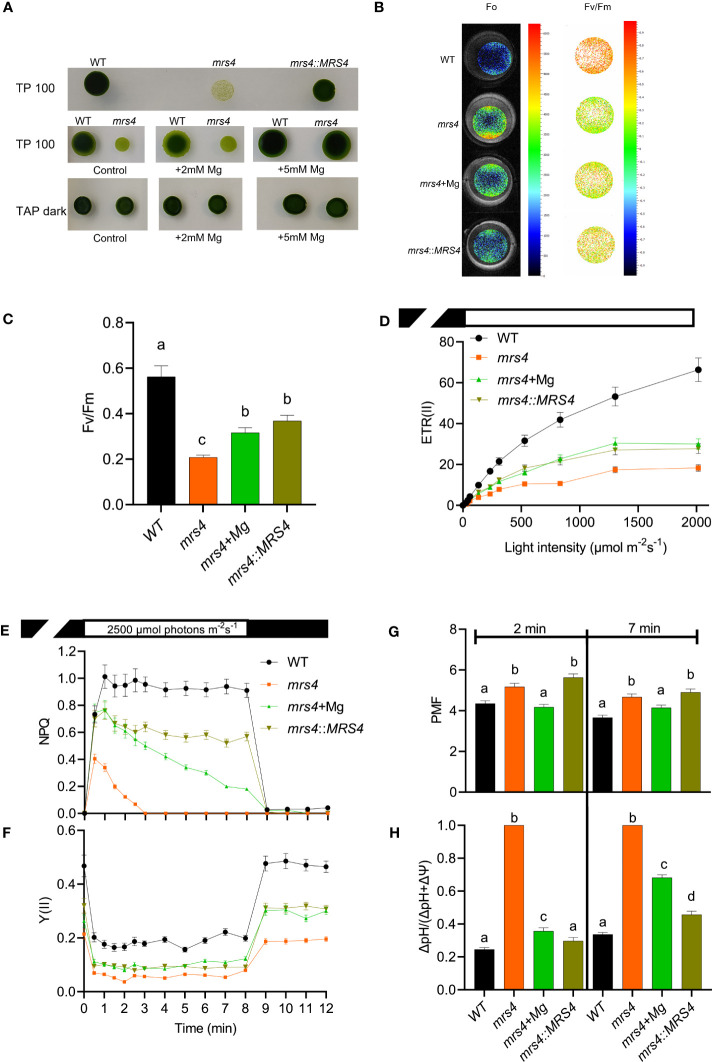Figure 7.
Chlamydomonas mrs4 experiences light stress. Wild type (WT), mrs4, and complemented mrs4:MRS4 were grown in the light (100 μmol photons m−2 s−1) on TP medium (TP100) or in darkness on TAP (TAP dark), and where indicated supplemented with 5 mM Mg2+. (A) Spot tests on agar plates showing that complementation with VcMRS4 and Mg2+ supplementation improve the growth of the mutant. (B, C) Chl fluorescence imaging using FluorCam shows significantly reduced maximum quantum yield of PSII photochemistry (Fv/Fm) in mrs4 due to enhanced minimum fluorescence (F0). Complementation with VcMRS4 and Mg2+ supplementation improved the photosynthetic efficiency of the mutant. Chl fluorescence and electrochromic shift were recorded with a Dual-Pam-100. (D) Rapid light response curves of electron transport rates of PSII (ETR(II)). (E, F) Slow kinetics of Chl fluorescence induction during 8 min of illumination followed by 4 min in darkness. The data show reduced ETR(II), NPQ, and Y(II) in mrs4 and improvement by complementation with VcMRS4 and Mg2+ supplementation of cells grown in TP100. (G, H) The total proton motive force (PMF) and partitioning to ΔpH were determined from ECS decay kinetics in darkness of cells grown in TAP dark and pre-exposed at 660 μmol photons m−2 s−1 for 2 or 7 min. The data in (C–G) are means ± S.E.M. (n = 3 replicates). Different letters indicate significant differences among the genotypes according to Tukey one-way ANOVA (P < 0.05). The PMF in the mrs4 mutant consists of 100% ΔpH, indicating that the cells experience high light stress.

